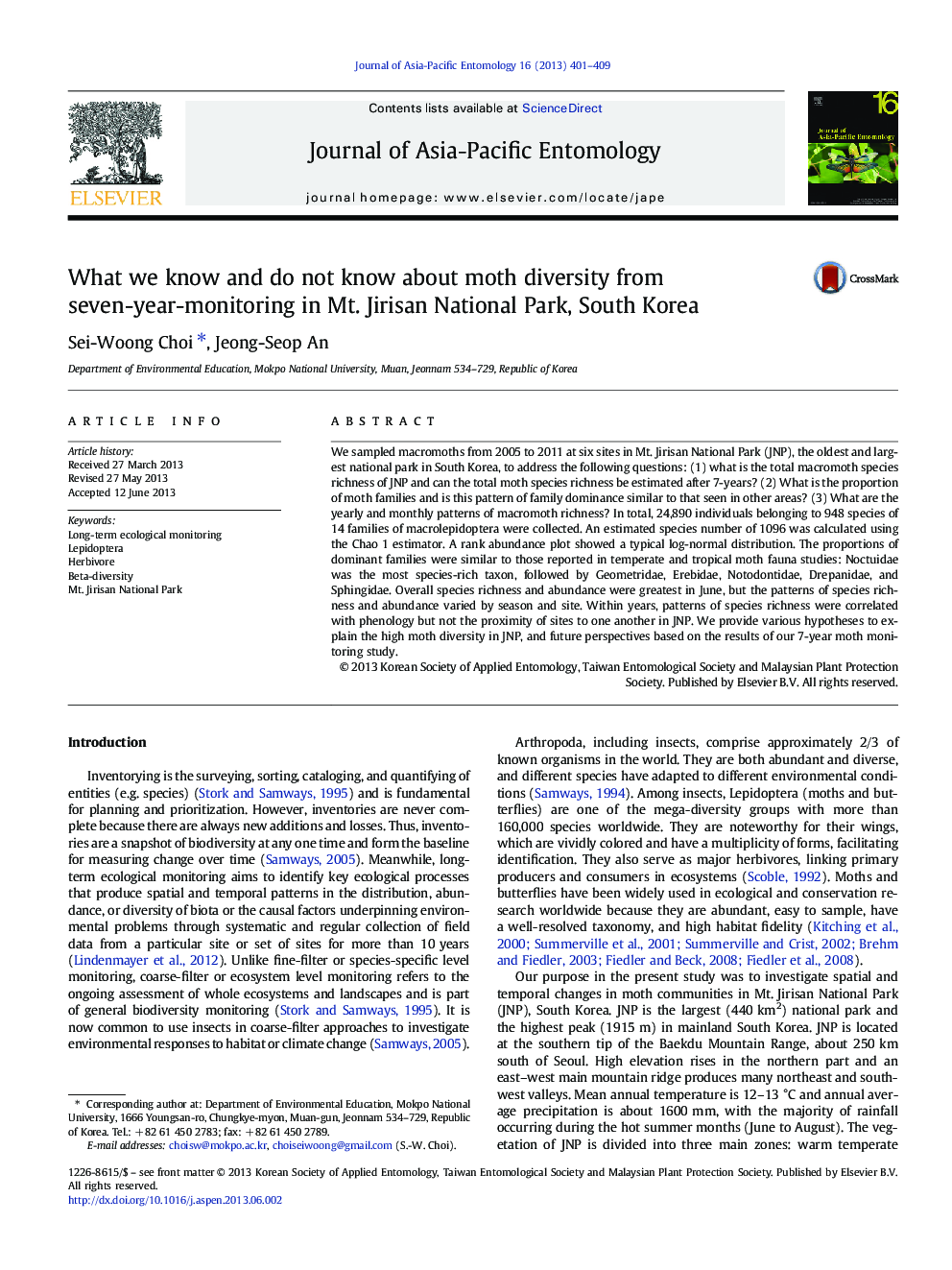| کد مقاله | کد نشریه | سال انتشار | مقاله انگلیسی | نسخه تمام متن |
|---|---|---|---|---|
| 4524491 | 1323580 | 2013 | 9 صفحه PDF | دانلود رایگان |

• 24,890 individuals in 948 species of macromoths
• A typical log-normal rank-abundance distribution
• Species richness and abundance were greatest in June
• Close relationship between temporal changes and species abundance
We sampled macromoths from 2005 to 2011 at six sites in Mt. Jirisan National Park (JNP), the oldest and largest national park in South Korea, to address the following questions: (1) what is the total macromoth species richness of JNP and can the total moth species richness be estimated after 7-years? (2) What is the proportion of moth families and is this pattern of family dominance similar to that seen in other areas? (3) What are the yearly and monthly patterns of macromoth richness? In total, 24,890 individuals belonging to 948 species of 14 families of macrolepidoptera were collected. An estimated species number of 1096 was calculated using the Chao 1 estimator. A rank abundance plot showed a typical log-normal distribution. The proportions of dominant families were similar to those reported in temperate and tropical moth fauna studies: Noctuidae was the most species-rich taxon, followed by Geometridae, Erebidae, Notodontidae, Drepanidae, and Sphingidae. Overall species richness and abundance were greatest in June, but the patterns of species richness and abundance varied by season and site. Within years, patterns of species richness were correlated with phenology but not the proximity of sites to one another in JNP. We provide various hypotheses to explain the high moth diversity in JNP, and future perspectives based on the results of our 7-year moth monitoring study.
Figure optionsDownload as PowerPoint slide
Journal: Journal of Asia-Pacific Entomology - Volume 16, Issue 4, December 2013, Pages 401–409